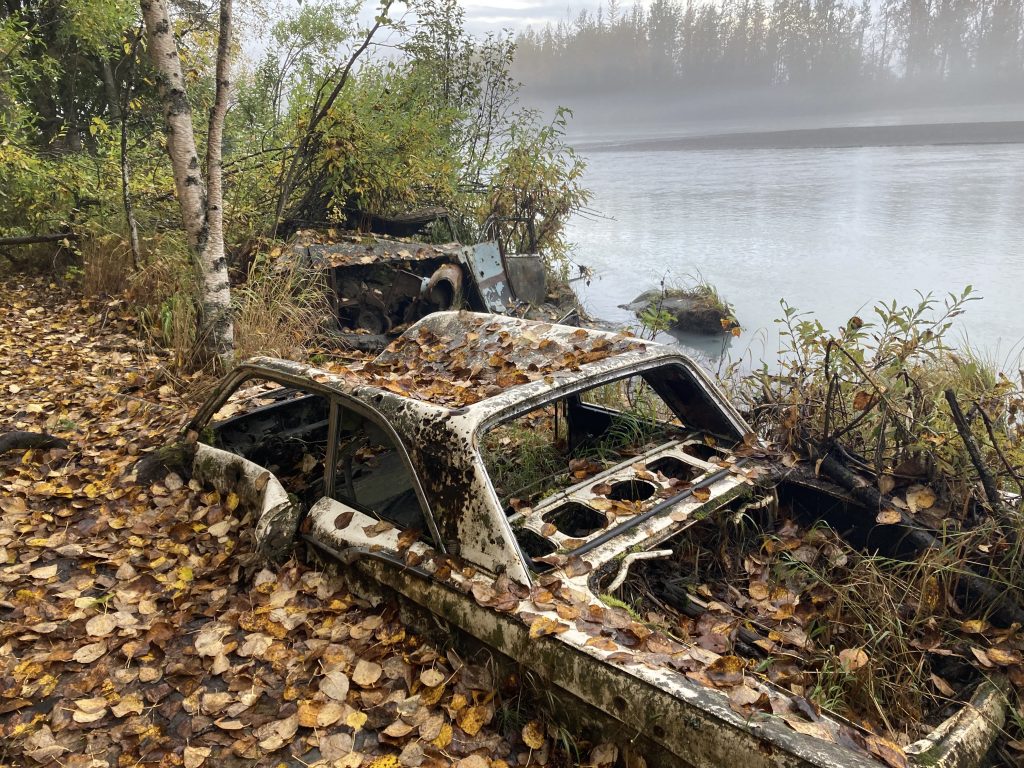
Contaminated Lands and Brownfields
The Native Village of Eklutna (NVE) Tribal Council and US Environmental Protection Agency support the NVE Land and Environment Department to advocate for cleanup of lands near our community. Of particular interest are contaminated sites and Brownfields near Eklutna Village, especially those that may affect Eklutna lands and people. The NVE Land and Environment Department will track these sites and, where useful, help with and coordinate timely assessment and cleanup efforts.
What is a Brownfield?
Brownfields are generally contaminated sites which could be targeted for cleanup and reuse or redevelopment. According to the EPA, a ‘brownfields site’ is defined as real property, the expansion, redevelopment, or reuse of which may be complicated by the presence or potential presence of a hazardous substance, pollutant or contaminant. Another Brownfields site qualification is that there is no solvent responsible party.
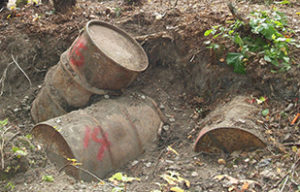 Examples of potential Brownfields:
Examples of potential Brownfields:
- Old or illegal dumps
- Petroleum spills
- Abandoned or idle structures with lead paint, asbestos or other hazardous materials
- Old fuel storage areas
- Mine scarred lands
NVE BROWNFIELDS SITES
Old Matanuska Townsite
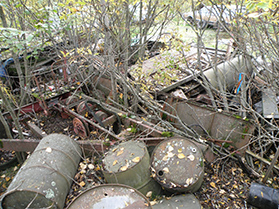
This is our best potential Brownfield site. The documents below detail voluminous contaminants were stockpiled by the previous site owner, whose heirs do not have the money for assessments or cleanup. Most of the contamination has been removed, but may have secondarily impacted neighboring lands through surface and groundwater. Around six area land holders may be impacted. NVE submitted an EPA Targeted Brownfields Assessment Application to install and test samples from three groundwater test wells in the right-of-way at the site. The site is considered intermittent wetlands and is bordered by Rabbit Slough and Wasilla Creek, which sustain salmon fisheries and it supports subsistence resources such as moose and rabbits. The lands could also be characterized for contaminants. After any necessary remediations, the site could be reused as conservation mitigation lands.
Update:
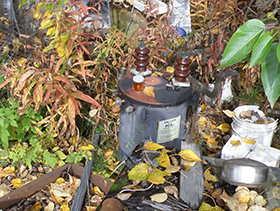 NVE successfully applied for this site to be recognized by EPA as a Brownfields Site. After the approval, NVE proceeded to submit a Targeted Brownfields Application (TBA) to help facilitate monitoring at this site for groundwater contamination. This application was approved in the summer of 2018.
NVE successfully applied for this site to be recognized by EPA as a Brownfields Site. After the approval, NVE proceeded to submit a Targeted Brownfields Application (TBA) to help facilitate monitoring at this site for groundwater contamination. This application was approved in the summer of 2018.
Links:
 NVE Old Matanuska Townsite Pamphlet (744.3 KiB) – NVE mailed this pamphlet to Old Matanuska Townsite potentially impacted landowners. It summarizes the situation and potentials of the site as a Brownfield and how NVE can help.
NVE Old Matanuska Townsite Pamphlet (744.3 KiB) – NVE mailed this pamphlet to Old Matanuska Townsite potentially impacted landowners. It summarizes the situation and potentials of the site as a Brownfield and how NVE can help.
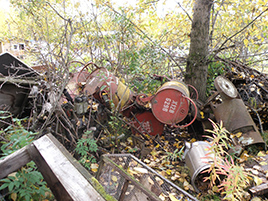
 NVE Matanuska Townsite PowerPoint Presentation (1.5 MiB) – This slide show summarizes the situation at the Townsite in words and pictures, with focus on alleviating liability concerns of potentially impacted landowners.
NVE Matanuska Townsite PowerPoint Presentation (1.5 MiB) – This slide show summarizes the situation at the Townsite in words and pictures, with focus on alleviating liability concerns of potentially impacted landowners.
 Matanuska Townsite Phase 1 Assessment (20.2 MiB) – This Phase 1 Environmental Site Assessment was prepared in 2009, before the site was remediated, for Eklutna, Inc. on their property at the site by Chilkat Environmental.
Matanuska Townsite Phase 1 Assessment (20.2 MiB) – This Phase 1 Environmental Site Assessment was prepared in 2009, before the site was remediated, for Eklutna, Inc. on their property at the site by Chilkat Environmental.
 2009 EPA START Report On Matanuska Townsite Removal Assessment (8.7 MiB) – This trip report assesses the extent and potential hazards posed by waste materials present at the time on multiple properties in the Matanuska Town Site subdivision.
2009 EPA START Report On Matanuska Townsite Removal Assessment (8.7 MiB) – This trip report assesses the extent and potential hazards posed by waste materials present at the time on multiple properties in the Matanuska Town Site subdivision.
 ADEC 2016-04-29 Site Visit Summary Old Matanuska Townsite (1.7 MiB) – This report gives background on ADEC activities directed toward site remediation and describes remaining problem areas.
ADEC 2016-04-29 Site Visit Summary Old Matanuska Townsite (1.7 MiB) – This report gives background on ADEC activities directed toward site remediation and describes remaining problem areas.
 EPA R10 Site Eligibility Worksheet (2.0 MiB) – NVE developed and submitted this worksheet to EPA to initiate the process of consideration for the Old Matanuska Townsite as a Brownfield.
EPA R10 Site Eligibility Worksheet (2.0 MiB) – NVE developed and submitted this worksheet to EPA to initiate the process of consideration for the Old Matanuska Townsite as a Brownfield.
 TBA Questionnaire Mat-Su Final (5.7 MiB) – The Targeted Brownfield Application Questionnaire was submitted summer 2018, and approved late summer 2018.
TBA Questionnaire Mat-Su Final (5.7 MiB) – The Targeted Brownfield Application Questionnaire was submitted summer 2018, and approved late summer 2018.
Matanuska River Dump

This is an open debris pile on and in the Matanuska River. The Alaska Railroad initially placed railroad cars at the site in the 1960’s to help stabilize the river bank. After the railroad cars were placed, the site was used as an unpermitted open dump. Trash, including vehicles, household garbage, fuel cans and 55-gallon drums, scrap metal, and other miscellaneous debris were discarded there. The dump has the potential to directly impact the river’s water quality. River channels run through and next to the dump at all times of the year. Visible sheens have been observed in the river. This open dump is within the Drinking Water Protection Area for a minimum of three public water systems.
The Matanuska River is designated for all uses, with the most common uses being subsistence and recreation, including fishing and river rafting. The dump is near a hiking trail in a scenic riparian woodland area.
Links:
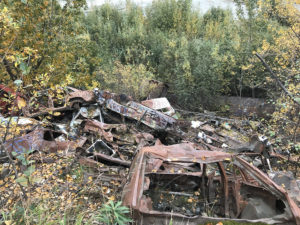
 ADEC Matanuska-River-Debris Site-Assessment-2004 (51.5 MiB) – Assessment of the quantity of debris and potential water quality pollutants from the Matanuska River dump.
ADEC Matanuska-River-Debris Site-Assessment-2004 (51.5 MiB) – Assessment of the quantity of debris and potential water quality pollutants from the Matanuska River dump.
 ADEC Matanuska-River-Debris Removal-Assessment 2004 (32.9 MiB) – Assessment of the feasibility, advantages and disadvantages of removing the Matanuska River dump debris. Briefly, they found that removal would require significant vegetation removal along the hiking trail and removal of the rail cars might require replacement with alternate bank stabilization structures. Some of the lighter surface debris might be removed and dumping access inhibited.
ADEC Matanuska-River-Debris Removal-Assessment 2004 (32.9 MiB) – Assessment of the feasibility, advantages and disadvantages of removing the Matanuska River dump debris. Briefly, they found that removal would require significant vegetation removal along the hiking trail and removal of the rail cars might require replacement with alternate bank stabilization structures. Some of the lighter surface debris might be removed and dumping access inhibited.
 ADEC Matanuska River Debris TMDL Summary 2017 (292.4 KiB) – An ADEC public information pamphlet describing the Matanuska River dump problem and potential solutions.
ADEC Matanuska River Debris TMDL Summary 2017 (292.4 KiB) – An ADEC public information pamphlet describing the Matanuska River dump problem and potential solutions.
 ADEC Draft Matanuska River Residue TMDL 2017 (1.3 MiB) – Addresses debris impairment to the Matanuska River from the dump.
ADEC Draft Matanuska River Residue TMDL 2017 (1.3 MiB) – Addresses debris impairment to the Matanuska River from the dump.
NVE FUD Site – The NALEMP PROJECT
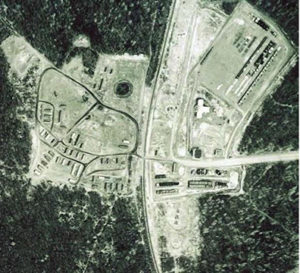
What is a FUD Site?
The Department of Defense (DOD) is responsible for the environmental restoration of formerly owned or leased military lands. These lands are known as Formerly Used Defense Sites or FUD sites. The U.S. Army is the responsible agent for restoration while the Army Corps of Engineers executes the FUD program for the U.S. Army and the DOD. Sites are cleaned up from past DOD activities, and if potential contamination is found, further restoration is performed.
What is NALEMP?
Native American Lands Environmental Mitigation Program (NALEMP) is a DOD program that supports tribes to address FUD site impacts of importance on Indian Lands. This includes Alaska Native Claims Settlement Act (ANCSA) conveyed lands and other Native allotments.
NVE has worked to address DOD impacts at the Eklutna Army FUD site with NALEMP support since 2005. The Eklutna Army Site was historically used for season camps, subsistence hunting, gathering of firewood, and harvesting berries and other plants. From 1927-1947, the area was used as an Indian Boarding School that served all of Alaska. In 1968, the DOD and the U.S. Army used the site for supply storage and housing. The U.S. Army vacated the site in 1971. Much of the site was leveled and the debris was piled along the perimeter and at a central dump location. ANCSA conveyed site lands to the Eklutna Inc. village corporation.
With NALEMP, tribal personnel collected and removed over 100,000 pounds of debris scattered throughout the woods at the site. This included remains of 20 quonset hut frames and other structural debris, thousands of feet of 16 strand barbed wire fencing, barrels, scrap metal track “marsh mats”, over an additional 10,000 lbs. of “mineral wool” layered with wire mesh and a wide range of other debris. We filled in entrapment hazards, such as old latrine pits, and leveled and sorted through berms and dumps to remove buried Army debris. Additionally, a berm up to 50 ft. high and 1,000 ft. long was leveled with heavy equipment, and 800,000 pounds of debris, mostly building rubble was hauled for disposal.
We addressed the Eklutna Army Site drum dump where 117 drums were excavated, tested, and disposed of. Drums were rusty, some banged up, and leaking. Contents included lead based paint, varnish, tar, tar gas, and solvents. Some barrels of solvents contained trichloroethylene (TCE) that may have been used to degrease equipment of in training to decontaminate equipment exposed to nerve gas. NVE tested, excavated and disposed of 206 tons of contaminated soil from the site.
More recently, NVE tribal member crews, staff, and Chilkat Environmental have surveyed the site for buried metal debris that might be drums, by walking transect lines spaced 10 feet apart, with magnetometers and metal detectors. This survey is ongoing and has found no hazardous materials to date.
The USACE FUD Site Program has been characterizing the pattern of soil and groundwater TCE contamination at the site since 2013. TCE was likely stockpiled in barrels at the site and some of this probably spilled, where it spread with the groundwater and its gas rose to permeate a larger soil area. The perimeter of the groundwater plume is demarcated (shown in the figure below) except to the north, in the wetlands, where more sampling remains to be done to define the extent.
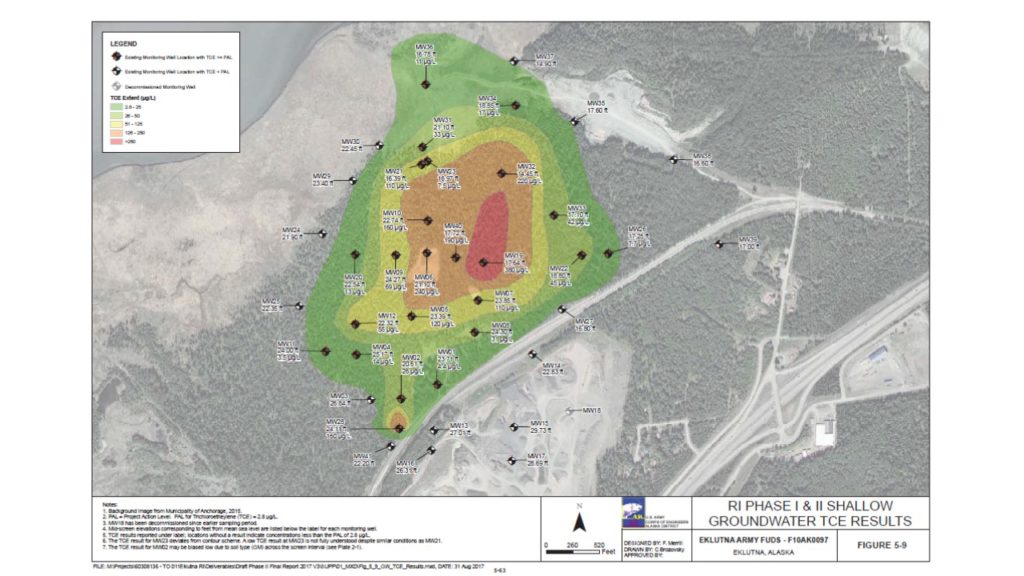
A lifetime of drinking water from wells at any of the colored area in he map above would result in elevated cancer risk. FUD Site Engineers also put hoods over the ground and measured concentrations of gas that collected in these. They say after laying at these sites a long time, one might feel “weird”, but would not get cancer. The TCE may kill some “bugs” in the wetlands, but it does not bioaccumulate to higher concentrations in animals up the food chain. FUD Site Engineers plan more assessments of ecological risks in the wetlands.
This site is a priority for the FUD Site program and estimate two to three more years of assessment work before beginning on remediation and clean-up design. They intend to better define concentrations and patterns of TCE at the spill site, better define transport within the groundwater, and delineate the extent of concentrations toward the Inlet. The FUD Site program will do more air sampling and a full risk assessment. After the full risk assessment, they may then remove or clean source contamination areas.
Links:
 Eklutna Army Site NVE NALEMP Cleanup Pictures (2.6 MiB) – A brief summary and some pictures showing NVE’s cleanup of the Eklutna Army Site with support from the Department of Defense Native American Lands and Environmental Mitigation Program.
Eklutna Army Site NVE NALEMP Cleanup Pictures (2.6 MiB) – A brief summary and some pictures showing NVE’s cleanup of the Eklutna Army Site with support from the Department of Defense Native American Lands and Environmental Mitigation Program.
 Eklutna Army Site NVE SPIP 2015 (3.7 MiB) – This report summarizes 10 years of NVE mitigation activities at the Eklutna Army Site and presents plans to address other ongoing environmental concerns that affect our community.
Eklutna Army Site NVE SPIP 2015 (3.7 MiB) – This report summarizes 10 years of NVE mitigation activities at the Eklutna Army Site and presents plans to address other ongoing environmental concerns that affect our community.
 Eklutna Army Site NVE NALEMP 2018 Survey (29.1 MiB) – A summary of the 2018 field season with pictures.
Eklutna Army Site NVE NALEMP 2018 Survey (29.1 MiB) – A summary of the 2018 field season with pictures.
 Eklutna Army Site SPIP 2018 (63.6 MiB) – This report summarizes the NALEMP project to date and presents plans to address other ongoing environemental concerns at the site.
Eklutna Army Site SPIP 2018 (63.6 MiB) – This report summarizes the NALEMP project to date and presents plans to address other ongoing environemental concerns at the site.
Eklutna Army Site NALEMP Picture – A picture representation of the past and future work at the Eklutna Army Site by NVE.
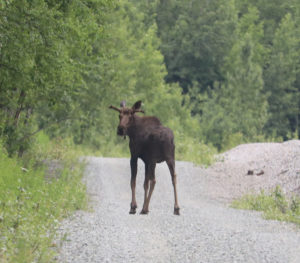
Other Brownfields Information
 NVE DEC Brownfields Handbook Page (1.1 MiB) – This description of NVE’s Brownfields Program is included in the ADEC Alaska State & Tribal Response Program Brownfield Handbook.
NVE DEC Brownfields Handbook Page (1.1 MiB) – This description of NVE’s Brownfields Program is included in the ADEC Alaska State & Tribal Response Program Brownfield Handbook.
Sources for NVE Public Record
NVE Brownfields Inventory – an interactive map of compiled contaminated and potentially contaminated sites.
NVE Prioritized Contaminated Sites 2024 – A list of the prioritized contaminated sites of interest to NVE and history of NVE’s actions with the sites, updated 2025.
NVE Inventory of Contaminated or Potentially Contaminated sites – A inventory of all sites of interest to NVE including their current status, most recent DEC update, and other helpful information about the site.
Alaska Department of Environmental Conservation (ADEC) Contaminated Sites and Brownfields web page links
ADEC Contaminated Sites Search
– A interactive map of Alaska contaminated sites that allows one to access ADEC contaminated sites database records by clicking on a site
Alaska Department of Environmental Conservation Brownfields website
– ADEC Contaminated Sites Program Reuse and Redevelopment webpage, with a wealth of information on Alaska Brownfields.
Past NVE Contaminated Sites Clean-ups
Eklutna River Canyon Dump (2012)
NVE now has a new Community Reporting Tool! To report a site to the LE Department, please click on the link below or scan the QR Code.
Brownfields Survey
